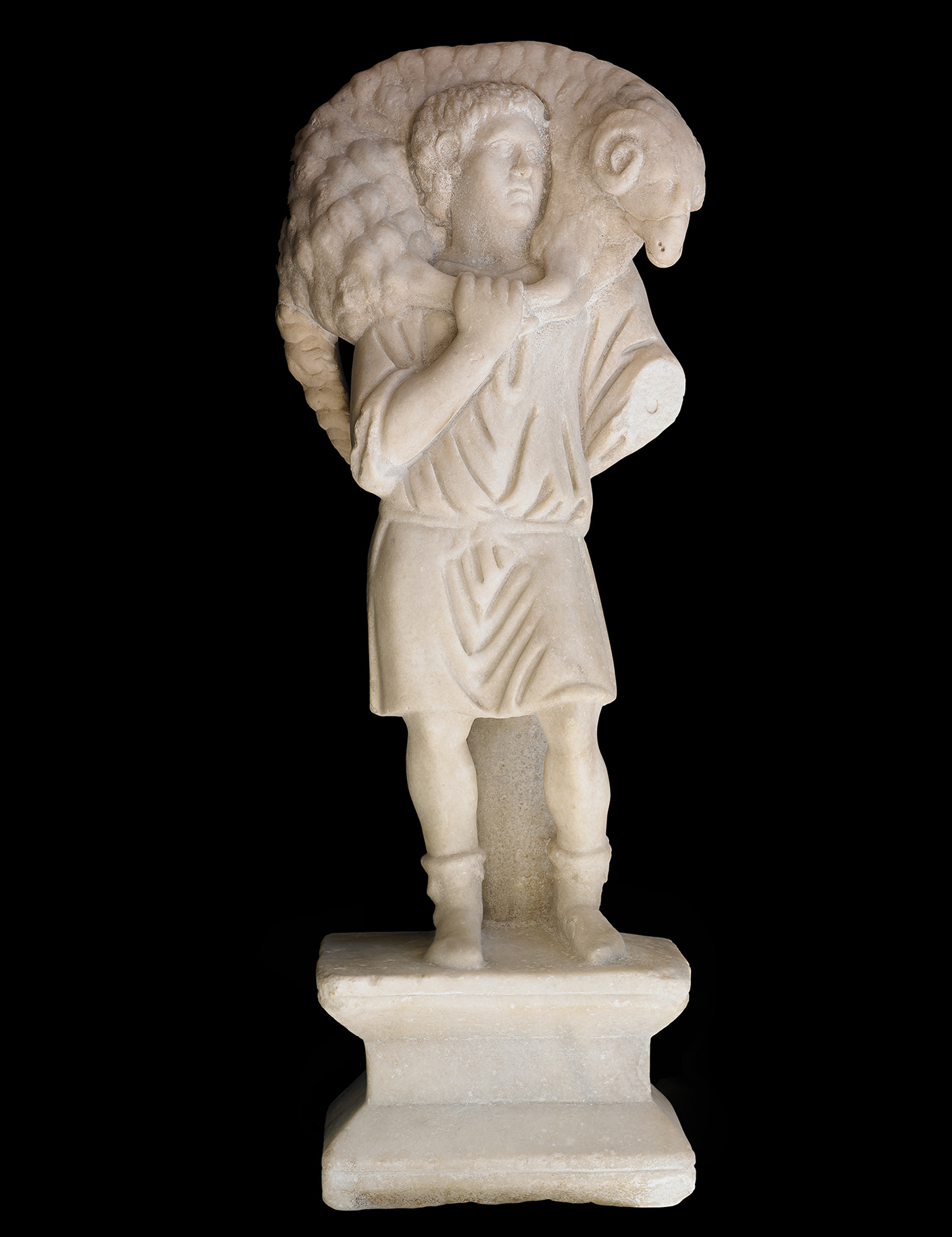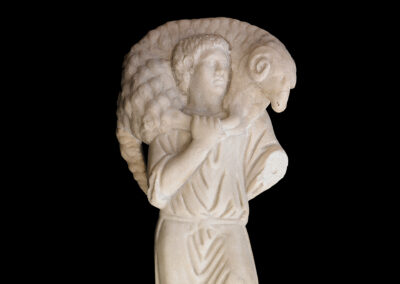The figure of the Good Shepherd is one of the emblematic images in the creation of Christian iconography, which draws on both Old Testament conceptions and pagan models. There are abundant biblical metaphorical references to the Lord as a shepherd who watches over his flock, but the iconographic origin of this theme is the Hermes Cyrophoros, who carries the sacrificial sheep, a common figure in the late Roman pagan world. For this reason, it is difficult to distinguish between a pagan Hermes Cyrophorus and a Christian Good Shepherd in the pieces from the Late Roman Empire. According to the archaeologist Pedro de Palol, this piece was possibly made in a Roman workshop during the reign of Constantine the Great, the emperor who legitimised the Christian cult. The young man carries the lamb on his shoulders and wears boots and a short tunic. The sculptural group rests on its back on a pillar and pedestal. It is worth noting the turn to one side of the head, the shepherd holds the four legs of the lamb with one hand and there is a cubic conception of its head. This work is part of the collection of sculptures that the 1st Duke of Alcalá de los Gazules formed in Naples during his viceroyalty in the city of Naples, and for whose exhibition he built a new palace in the orchard of the one he had inherited, known today as the Casa de Pilatos (House of Pilate). This particular piece may have come from the Vatican collection, as a gift from Pope Pius V to the Viceroy of Naples, whose taste for classical antiquities was known throughout Italy.



